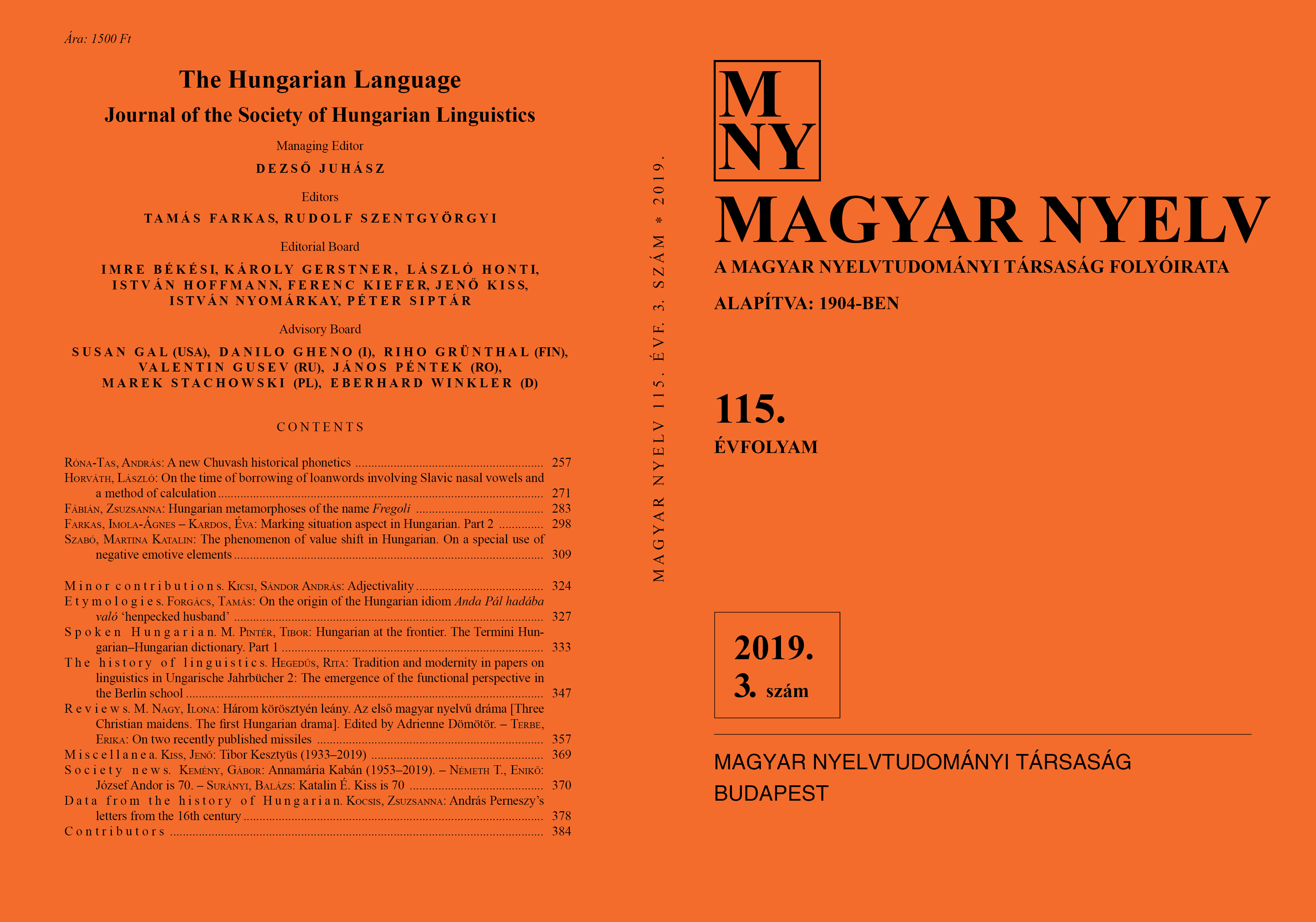Hungarian metamorphoses of the name Fregoli
DOI:
https://doi.org/10.18349/MagyarNyelv.2019.3.283Keywords:
clothes airer, deonymisation, Leopoldo Fregoli, transonymisationAbstract
The study aims to analyse the processes of transonymisation and deonymisation of the proper name Fregoli in Hungarian. Leopoldo Fregoli (1867–1936) was a quick change artist in the first half of the 20th century and (after a brief artistic tour in Budapest) became famous in Hungary, too: his great popularity resulted in various uses of his family name. The most used meaning of the word fregoli in Hungarian is ‘clothes airer’: the explicitations of this and other antiquated and new meanings are treated in this paper.
Downloads
Published
Issue
Section
License
Copyright (c) 2024 Zsuzsanna Fábián

This work is licensed under a Creative Commons Attribution-NonCommercial-NoDerivatives 4.0 International License.
Magyar Nyelv is a Diamond Open Access periodical. Documents can be freely downloaded and duplicated in an electronic format, and can be used unchanged and with due reference to the original source. Such use must not serve commercial purposes. In the case of any form of dissemination and use, Hungarian Copyright Act LXXVI/1999 and related laws are to be observed. The electronic version of the journal is subject to the regulations of CC BY-NC-ND (Creative Commons – Attribution-NonCommercial-NoDerivatives).
The journal permits its authors, at no cost and without any temporal limitation, to make pre-print copies of their manuscripts publicly available via email or in their own homepage or that of their institution, or in either closed or free-for-all repositories of their institutions/universities, or other non-profit websites, in the form accepted by the journal editor for publication and even containing amendments on the basis of reviewers’ comments. When the authors publicize their papers in this manner, they have to warn their readers that the manuscript at hand is not the final published version of the work. Once the paper has been published in a printed or online form, the authors are allowed (and advised) to use that (post-print) version for the above purposes. In that case, they have to indicate the exact location and other data of the journal publication. The authors retain the copyright of their papers; however, in the case of an occasional secondary publication, the bibliographical data of the first publication have to be included.



